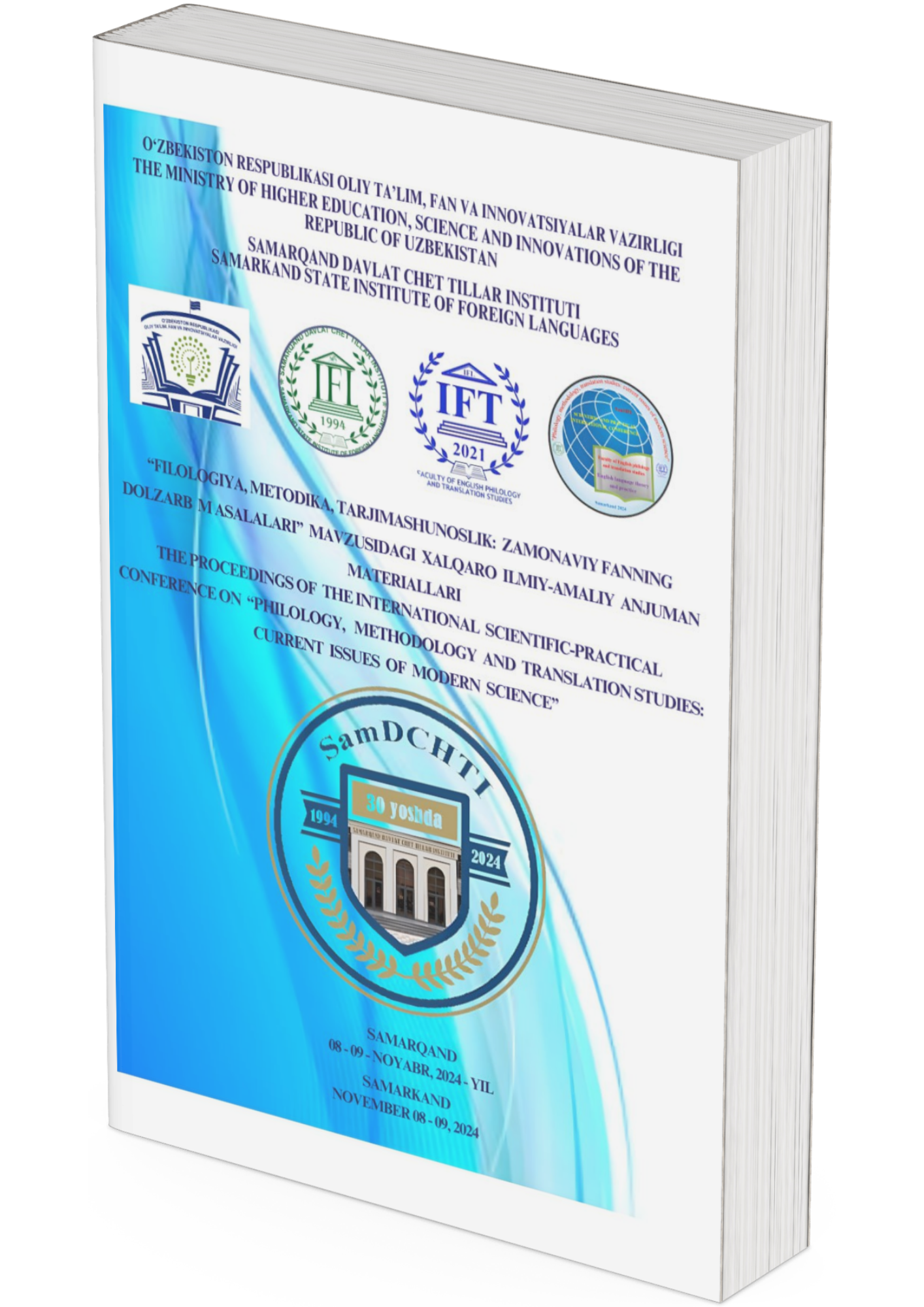A comparative analysis of the “-ing” suffix in English and Uzbek: divergent purposes in similar prominence
DOI:
https://doi.org/10.2024/d2k5d466Keywords:
Uzbek, English, suffix, morphology, verbal noun, participle, gerund, comparative linguisticsAbstract
e “-ing” suffix in English and Uzbek holds a prominent role in each language, but it serves fundamentally different linguistic functions. In English, the suffix predominantly forms the present participle, gerunds, and verbal nouns. Conversely, in Uzbek, while "-ing" is not used in verb morphology, a sound-alike suffix, "-ng" or "-ning," performs essential nominal and genitive functions. This article compares the functions of "-ing" in English with those of "-ning" in Uzbek, illustrating the differences and uncovering intriguing insights into language evolution and morphology.
References
Amiritdinova, D. "Features of advertising materials." Вестник магистратуры 5-2 (128) (2022): 42-43.
Biber, D., Conrad, S., & Leech, G. (2002). Longman Student Grammar of Spoken and Written English. Pearson Education.
Hopper, P. J., & Thompson, S. A. (1980). Transitivity in grammar and discourse. Language, 56(2), 251-299.
Nasilov, D., & Mukhtorova, F. (2005). Uzbek Grammar. University of Chicago Press.
Swan, M., & Smith, B. (2001). Learner English: A Teacher’s Guide to Interference and Other Problems. Cambridge University Press.
Tegey, H., & Robson, B. (1996). A Reference Grammar of Uzbek. Georgetown University Press.
Downloads
Published
Conference Proceedings Volume
Section
License
Copyright (c) 2024 Ralph Shchusler Jr. (Author)

This work is licensed under a Creative Commons Attribution 4.0 International License.









